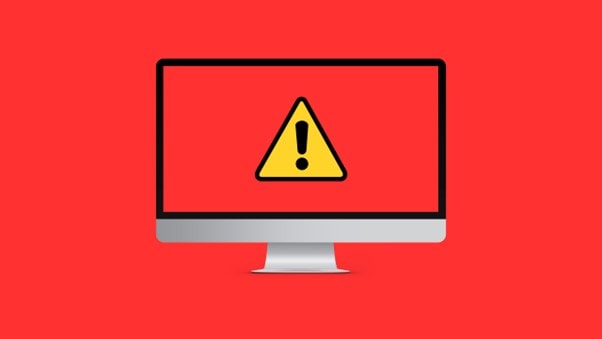Note: This is a guest post written by Jeeva Shanmugam – Common computer difficulties may be frustrating and irritating. These difficulties, ranging from unexpected crashes to sluggish software, can impede work and cause excessive stress.
However, with a little knowledge and a methodical approach to troubleshooting, you can quickly diagnose and address these issues, allowing you to face technological difficulties head-on.

Fix Common Computer Issues
This article provides an in-depth guide to troubleshooting common computer issues and helps readers with crucial ideas and steps for effectively overcoming these difficulties and getting their systems back on track. Here are some of the things you should take into consideration.
1. Identify the Problem
The first step in troubleshooting any problem is to identify its exact nature with pinpoint accuracy. For example, if your computer won’t boot up, you must decide whether the problem is with the power supply, the hard drive, or the operating system. After precisely identifying the problem, you may proceed to steps limit alternative solutions.
2. Collect Information
After identifying the issue, the next step is to gather detailed information about it. This includes writing down error messages, describing the exact symptoms of the problem, and recalling any recent computer system adjustments or changes. This information is critical in narrowing down potential solutions and aiding an efficient troubleshooting procedure.
3. Try Simple Troubleshooting Steps
After obtaining information about the problem, it is critical to try basic solutions since they are frequently straightforward to apply and may address the problem without further troubleshooting. This method can save time and effort when tackling typical technical issues. The following are some examples of common basic solutions that consumers might try:
- Restart Your Computer
Restarting Your Computer: When confronting technical troubles, the first and most important action to take is to restart your computer. Restarting aids in the resetting of different software processes and may assist to fix issues caused by momentary faults or conflicts. Simply shutting down and restarting the system will frequently resolve issues such as poor performance, unresponsive programs, or minor software errors. - Checking Your Cables and Connections
Physical connections are prone to separation or deterioration over time, resulting in a variety of hardware difficulties. It is critical to inspect all wires and connections, including power cables, data cables, USB connectors, and network cables. Check that they are firmly plugged in and are not damaged or bent. This easy procedure can alleviate issues such as devices not being identified, no internet access, or peripherals not working properly. - Updating Your Drivers
Device drivers that are out of date or corrupted might cause compatibility difficulties and different hardware faults. Users should check for the most recent driver upgrades for their hardware components to fix this. This is usually done using the operating system’s device manager or by visiting the manufacturer’s website. Updating drivers for components like graphics cards, network adapters, sound cards, and so on may frequently alleviate issues with hardware performance or device detection. - Running a Virus Scan
Malware infestations may have a significant influence on a computer system’s performance and stability. Running a thorough virus scan with reliable antivirus software is an important step in troubleshooting. The scan should include all files, folders, and storage devices on the system. If harmful software is found, the antivirus program will assist the user in removing it. Malware removal can resolve issues such as sudden system slowdowns, unexpected pop-ups, and odd behavior.
4. If Simple Solutions Don’t Work, Try More Advanced Solutions
When confronted with persistent computer problems that defy easy repairs, it becomes necessary to investigate more complicated solutions. Though these approaches are more difficult and require technical experience, they have the ability to address problems that standard troubleshooting measures cannot.
- Reinstalling the Operating System
When a computer displays chronic problems that defy normal troubleshooting, the underlying issue may be a faulty or misconfigured operating system. In such circumstances, reinstalling the operating system can be an effective solution. However, because it entails erasing the old system and reinstalling it from scratch, this procedure must be approached with caution.
As a result, before beginning with the reinstallation, make a backup of any vital data. This sophisticated approach may frequently address deep-seated software issues, giving your machine a new start and a clean slate. - Replacing Hardware Components
If your computer problems appear to be caused by particular hardware defects, replacing the problematic components may provide a permanent solution. Hardware-related difficulties may necessitate technical knowledge, as well as the use of diagnostic software or professional competence in some circumstances. Replace the defective hardware, whether it’s a failing hard drive, a damaged RAM module, or an out-of-date graphics card, to drastically improve your computer’s performance and eliminate irritating problems.
- Seeking Professional Assistance
Seeking expert assistance is a wise choice for computer problems that defy all attempts to resolve, or when you lack the technical abilities or confidence to conduct sophisticated troubleshooting tasks. Qualified professionals are well-versed in diagnosing and resolving a wide range of computer difficulties. Professionals can use specialized tools and skills to get to the base of an issue and implement effective solutions, whether it’s a software malfunction, a cryptic error message, or an elusive hardware problem. While hiring an expert may cost money, it typically saves time and assures proper issue solutions.
5. Try Other Methods
It might be difficult to troubleshoot common computer issues, but it is critical not to give up. If you’ve tried all of the solutions and are still having issues, you may look for assistance online or take your computer to a expert.
Here are some further computer troubleshooting tips:
- Maintain the most recent versions of your operating system and software.
- Back up your data on a regular basis.
- Install a firewall as well as antivirus software.
- Be cautious about what you download and install.
- Open emails from unknown senders with caution.
- Be cautious of phishing schemes.
Wrapping It All
To sum it up, understanding the ability to diagnose common computer problems is critical for a stress-free computing experience. Users may solve performance, connection, and software difficulties with confidence by taking a methodical approach and employing simple yet effective strategies.
Remember to start with the simplest solutions and work your way up, obtaining assistance from internet resources or specialists as needed. Thanks for reading.






